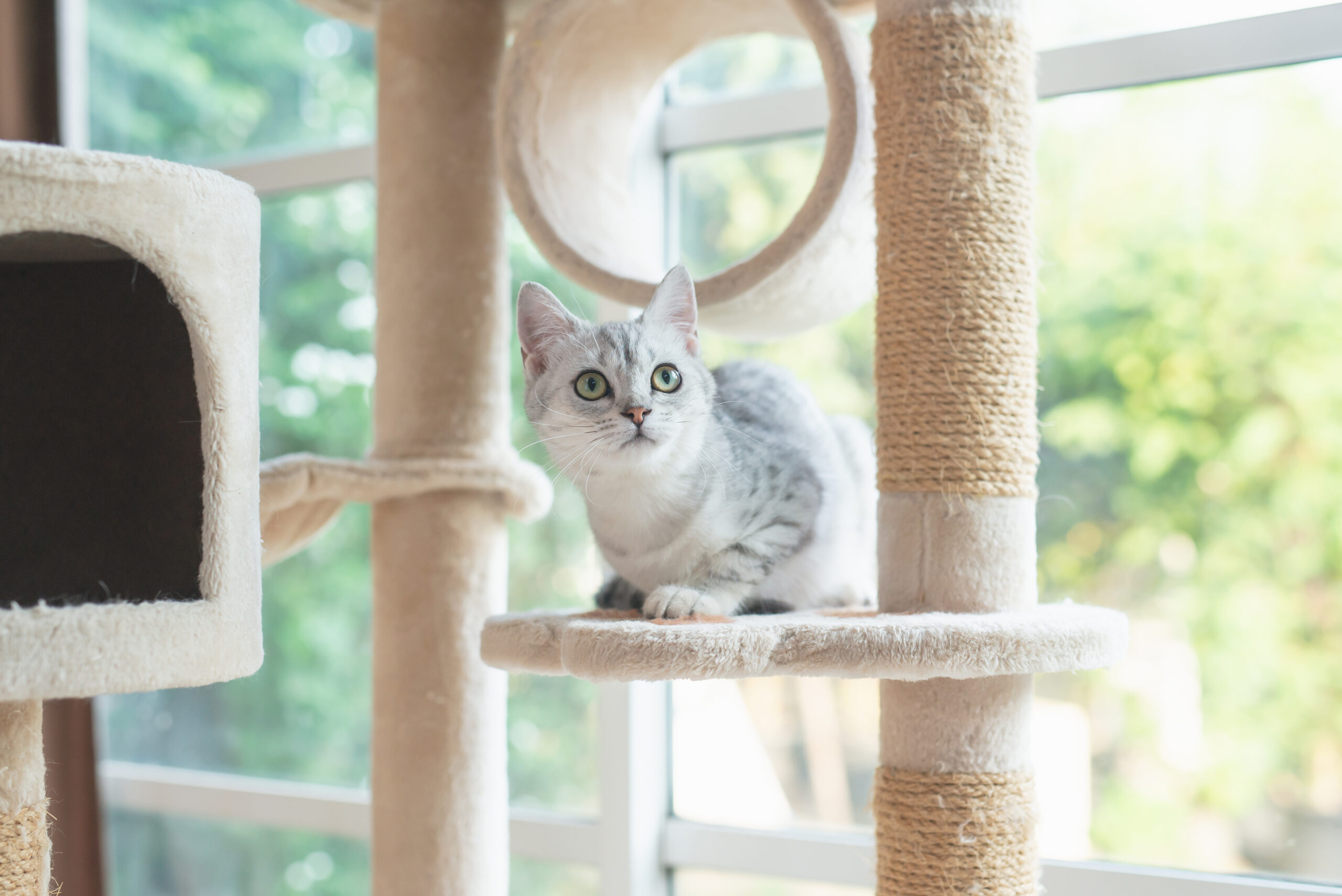Harness Training Your Cat
A taste of the wild
Sometimes it’s better for your cat to live indoors, as you reduce the chance of your cat going missing, getting hurt, or killing the local wildlife. But many cats long for a taste of the outdoors. Even if they have a home full of cat trees, cat grass, toys, and faithful humans to play with, they may sit at the window staring at the world outside, or pace restlessly. Luckily, there is a way to indulge your cat’s wanderlust safely: daily walks. If you train your cat to walk on a leash, the pair of you can set off on neighbourhood adventures and get a taste of the “wild”.
Harness the potential
First thing’s first: you’ll need to get a harness for your cat. You can’t walk a cat with a lead clipped to its collar, the way you would walk a dog. Cats have quite delicate throats and may easily choke on a leash. A harness is both safer and comfier. You can purchase a lead-style harness, which is made of a few straps and a leash. The straps are fastened around the cat’s chest, and the lead is clipped to the top.
Some cats learn the trick of slipping out of lead-style harnesses, so a vest-style harness is better for these tricky kitties. A vest-harness resembles a vest or waistcoat that is secured around the cat’s chest, often with Velcro. This type of harness is ideal for adventurous cats who tend to pull on the lead.
Training Time
It’s unlikely that your cat will immediately understand how to walk on a lead. You’ll need to gradually introduce your cat to the harness and walking on a leash.
Start off by introducing your cat to the harness. Make it a positive experience for your kitty: one easy way of doing this is by leaving the harness near your cat’s food bowl. If it’s a Velcro harness, open and close it a few times so that your cat can get used to the sound.
Try it on
Once your cat is used to seeing the harness, it’s time to try it on. Have plenty of treats with you: your cat will soon learn that the harness means good things like tasty treats! Put the harness on your cat but leave it unfastened. Praise and reward your cat for good behaviour. Keep each training session short; no more than a few minutes.
After a few days of this, if your cat is responding well to the training, you can step it up a notch by fastening the harness. Play with the fit of the harness to make sure that it is comfortable. The harness should be fairly tight, but you should be able to slip two fingers under it. You can try leaving the harness on for a little while so that your cat gets used to walking with it on.
As training progresses, you can leave it on for a little longer each time. Keep the training sessions short and sweet, and give your cat lots of praise and treats. It may take weeks for your cat to get used to wearing a harness, so don’t despair, just be patient.
Lead the way
If things are going well, then you can try adding a lead. Clip the leash on to the harness, and let your cat walk around dragging the leash. If he or she seems happy, you can try holding the end of the leash loosely. Eventually you can work up to guiding your cat around the room. Don’t put too much pressure on the leash. Your cat needs to get used to the feeling of pressure on the lead, which can make some cats nervous or panicky initially.
The Great Outdoors
If everything is going well so far, it’s time to visit the great outdoors. Carry your harnessed cat to a quiet area (ideally in your garden or yard). Have a thick towel with you to scoop up your cat if they panic. If your cat has never been outside before, it may take him or her a moment to start exploring. Keep your initial visits outdoors short and sweet and don’t go too far from home.
As your cat gains confidence, you can journey further afield. Walking a cat is very different from walking a dog. Some cats like long walks, but other will briefly prowl around the garden before curling up to snooze in the sun. Just keep an eye on your cat, and you should both be fine.




















